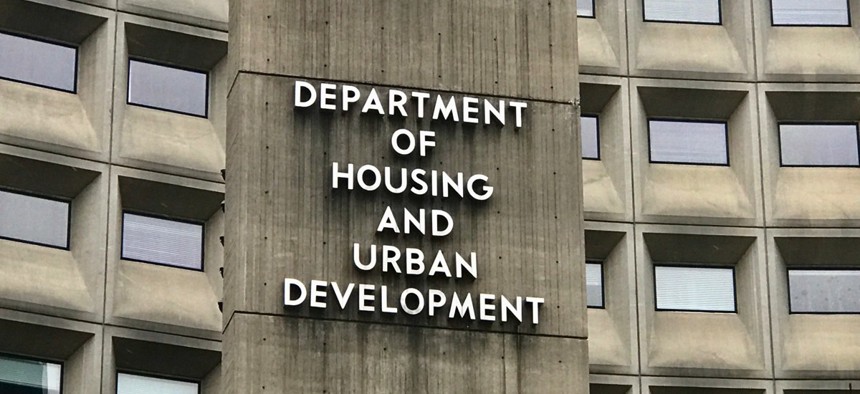City Officials Push for National Housing Strategy

A new housing task force intends to publish a policy toolkit in June for localities looking to address the affordability crisis, but federal, state and private partnerships are key.
City officials want to work with the federal government on a national housing strategy that prioritizes public land use policies to maintain permanent affordability.
The National League of Cities Housing Task Force, made up of representatives from more than 20 municipalities, held its first meeting last week in Washington, D.C. to decide on policy goals.
While the federal government is no longer in the construction business, capital stacking—the layering of financing sources to fund the development and improvement of housing—using tax credits remains critical, said Jim Brooks, city solutions director at NLC.
“I think it could be argued that a national housing strategy does not exist,” Brooks said. “The approach that happens is very much locally driven.”
When it comes to financing affordable housing, cities rely on a mix of local, state and federal resources. Housing trust funds, the HOME Investment Partnerships Program, Community Development Block Grants, Section 8 housing vouchers, and the Community Reinvestment Act are some of the more important ones, Brooks said.
But since 1980 the block grants have diminished in actual dollar value, and cities have had to rely increasingly on private sector investment not always targeted where it’s needed most, Brooks added.
Local officials would like the feds to streamline their ability to use programs and grants like CDBG and HOME and make permanent affordability a goal at the national level—not just a municipal one.
NLC’s Housing Task Force plans to release a policy toolkit for cities of all sizes in June advocating for the sharing of responsibilities among all levels of government.
Cities are sometimes reluctant to collaborate regionally because it forces them to relinquish some autonomy, Brooks said. But doing so can help connect affordable housing with jobs, health services and transportation.
The task force also emphasizes a community focus when it comes to housing that acknowledges the need for equitable tenant protections.
“It's not just about the number of roofs,” Brooks said. “It's about the people in the dwellings.”
For instance, preemptive state rent control laws can displace poorer residents in cities, Brooks added.
Cities facing a housing crunch already have a variety of land use mechanisms at their disposal like expanding community land trusts, changing zoning to allow for denser construction in places where single family housing is now the norm and tax abatements.
But the right policy levers vary depending on the marketplace, Brooks said. Accessory dwelling units are better suited to booming housing markets with low availability like Seattle or San Francisco, while rental inspection ordinances make more sense in university towns, where space is set aside for students but housing may not be up to code.
Seattle Mayor Jenny Durkan announced Monday the creation of an Affordable Middle-Income Housing Advisory Council to identify investment strategies, such as equitable investment in Opportunity Zones, that will close market gaps.
“Too many workers, including teachers, fire fighters, and police are getting priced out of this great city,” Durkan said in a statement. “Seattle urgently needs more affordable housing options.”
NLC President Karen Freeman-Wilson established the Housing Task Force because the city of which she is mayor, Gary, Indiana, has a growing economy, but at the same time is dealing with a number of dilapidated or abandoned homes that must be demolished in order to stabilize the real estate market.
“Every American deserves a home that is affordable, of good quality and allows them to contribute to the health and wellbeing of our communities,” Freeman-Wilson said in a statement.
The task force’s first meeting took place while the federal government’s partial shutdown was still in effect and many local officials were worried about rent subsidies and whether landlords would go for rent forgiveness, Brooks said. Those could be problems again in three weeks time, if Congress and President Trump don’t agree on how to fully fund the government.
D.C. Mayor Muriel Bowser chairs the task force and said local leaders continue to explore local solutions to the national housing crisis in spite of the shutdown concerns. The city recently designed new affordable housing for former homeless veterans and other residents, The John and Jill Ker Conway Residence, a contemporary high rise in an accessible part of town.
“To reach our affordable housing goals and meet our housing demands, we know it’s going to take collaboration on the local, regional and federal levels,” Bowser said in a statement. “In Washington, D.C., we’ve made progress through historic investments and a commitment to meeting the specific needs of our residents, but there’s more work to do.”
Dave Nyczepir is a News Editor at Route Fifty and is based in Washington, D.C.
NEXT STORY: FAA Declares the Super Bowl a 'No Drone Zone'






